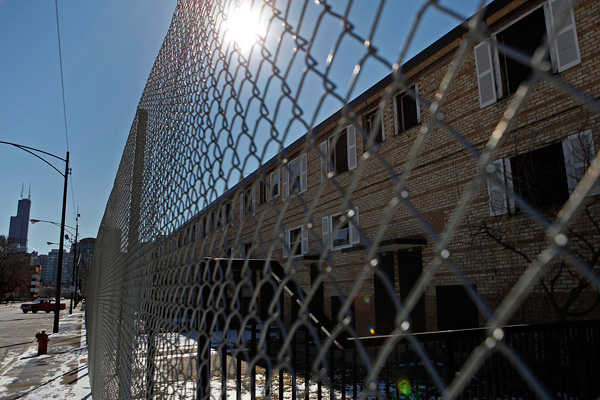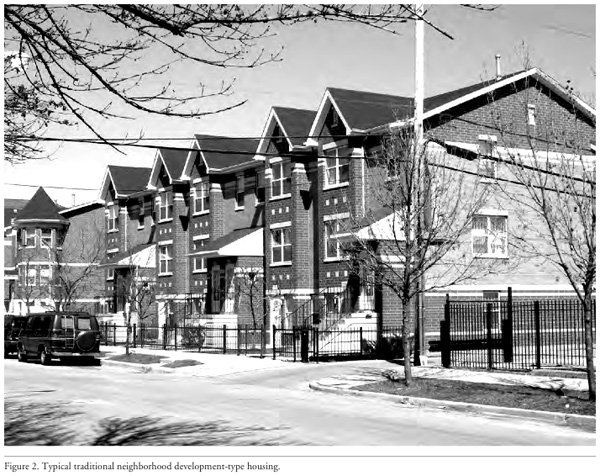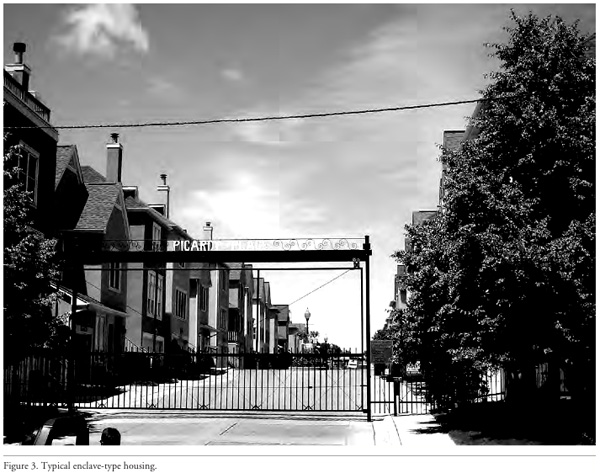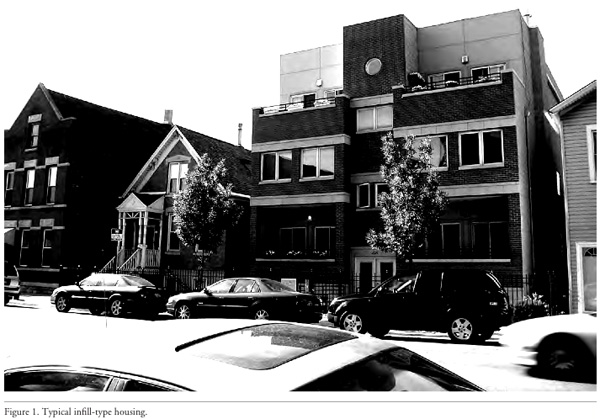
Photo: José M. Osorio/Chicago Tribune
Not long ago Emily Badger had a neat post at The Atlantic Cities: "The Small, Often Imperceptible Reasons Some Neighborhoods Feel Safer Than Others," about how people subtly and unconsciously "read" neighborhoods. And they do it quite well: "The researchers also looked at homicide data in New York City and found that, while controlling for things like income and population, these perceptions of safety correlate strongly with incidence of violent crime."
The idea is that you could, in response, subtly guide urban design to improve perceptions of neighborhoods, which is quite important if you're looking to improve one that's at risk or to attract the middle class back to struggling neighborhoods, still the greatest challenge in urbanism. I was thinking about that post when I read "Valuing New Development in Distressed Urban Neighborhoods: Does Design Matter?", a collaboration between UIC urban planners Brent D. Ryan and Rachel Weber that looks at new development in "distressed" (>20 percent below the federal poverty line) neighborhoods, which accounted for 46 percent of Chicago in 1990, when their data starts.
They look at three types of development in the city, all of which are recognizable.
"Traditional neighborhood development-type housing":

"Enclave-type housing":

And "infill-type housing":

The enclave offers protected and guaranteed parking, which is a nice feature if you've ever had your car broken into (yes; twice). And it looks more guarded from the neighborhood, perhaps a benefit in a distressed one.
The "traditional neighborhood development" offers protection against the "disadvantage when potential homebuyers 'do not know with certainty how the neighborhood development will evolve or proceed over time.'"
And infill developments offer "high physical integration with context," the opposite of traditional neighborhood development. Housing that is "poorly integrated with its surroundings," the authors speculate, "may stigmatize residents, particularly if they are low-income."
To test which of these benefits were actually most appealing, the authors looked at assessed value. And there was a clear winner (emphasis mine):
Our findings indicate that urban design plays a meaningful role in determining housing values in low-income Chicago neighborhoods. Most importantly, infill housing appears to command a value premium, compared to both TND and enclaves. From this we understand consumers to value housing that is integrated into its urban context over housing which is dissociated from it. People may associate urban developments that are homogeneous and dissociated from their surroundings with public housing, particularly in low-income neighborhoods.
This didn't come as much surprise to me, and I think it goes back to the way we unconsciously read cities. The scattered-site housing where I live, around West Town/Humboldt Park, looks clean and well-constructed from the street, reminding me most of college family housing I stayed in as a kid and have fond memories of, in the "traditional neighborhood development" style. But it stands out. More subtly than prior generations of public housing, but echoing (fairly or not) urbanism's failures rather than its successes.


